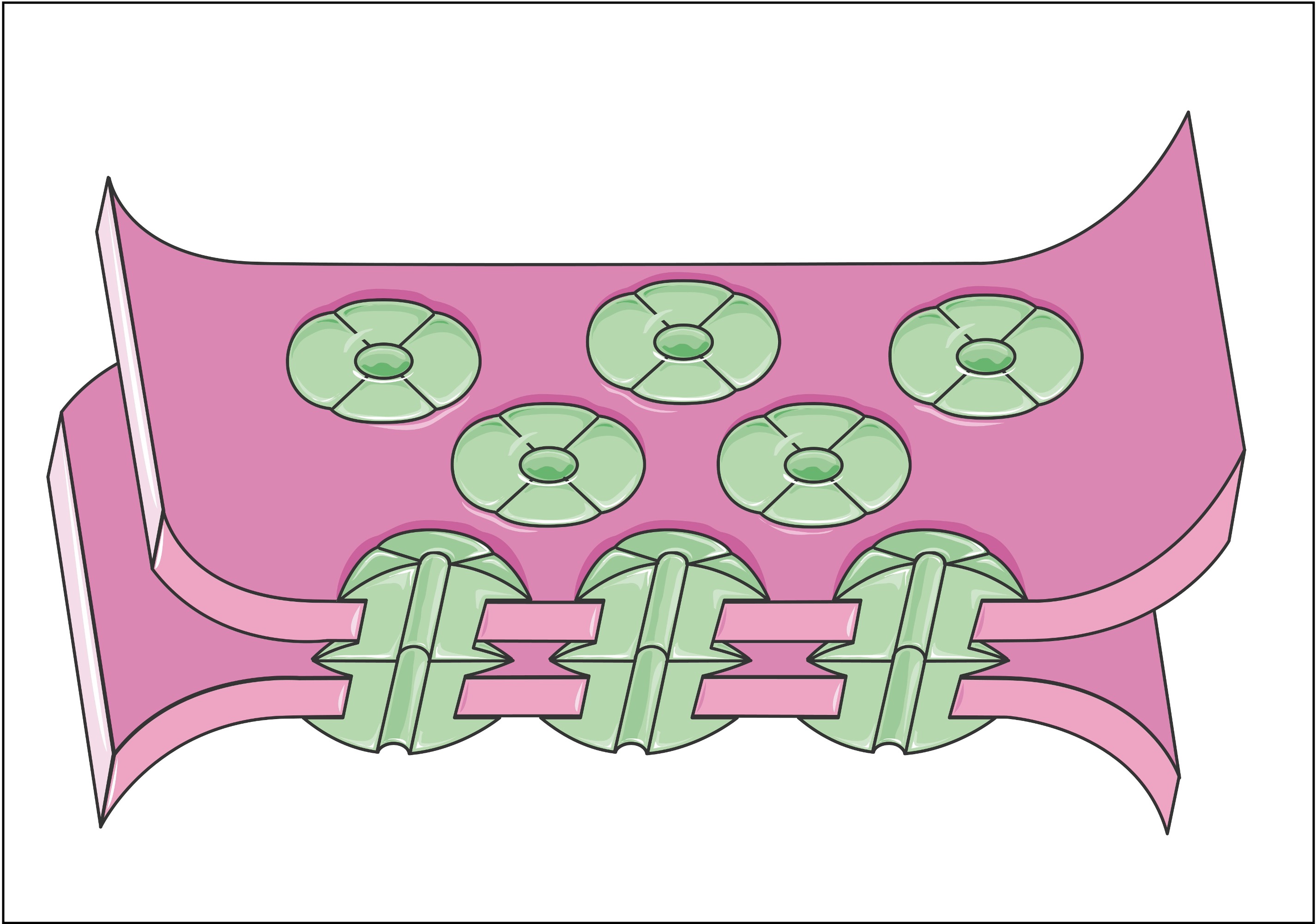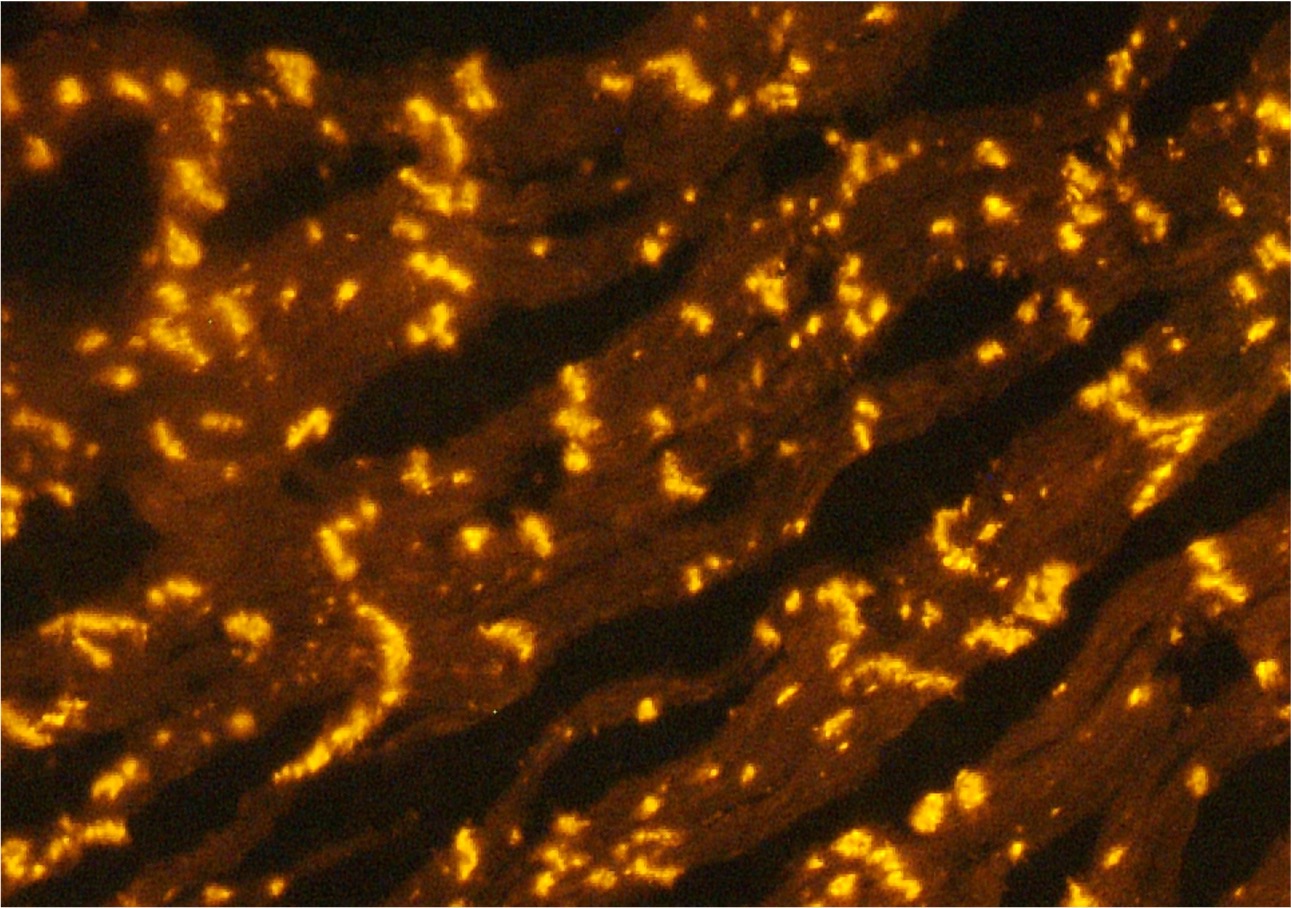

Cell Adhesion
Cell adhesion describes the attachment of cells to other surfaces via specialised membrane proteins called cell adhesion molecules (CAMs)
-
Cells can either be directly attached to other cells or indirectly anchored to the extracellular matrix (a gel-like framework between cells)
Cell adhesion molecules can play important roles in a variety of cellular processes – including growth, apoptosis, signal transduction, migration and tissue development
-
The targeting of specific cell adhesion molecules can limit the spread of malignant cancers (by inhibiting metastasis)
Different types of cell-cell junctions exist according to the type of cell adhesion molecule involved
-
Anchoring junctions – hold cells together to strengthen contact within tissues
-
Tight (occluding) junctions – create tight seals that result in an impermeable barrier to diffusion
-
Gap junctions – links cells together to allow the movement of material between them
Cell Adhesion Molecules

CAM (green)





